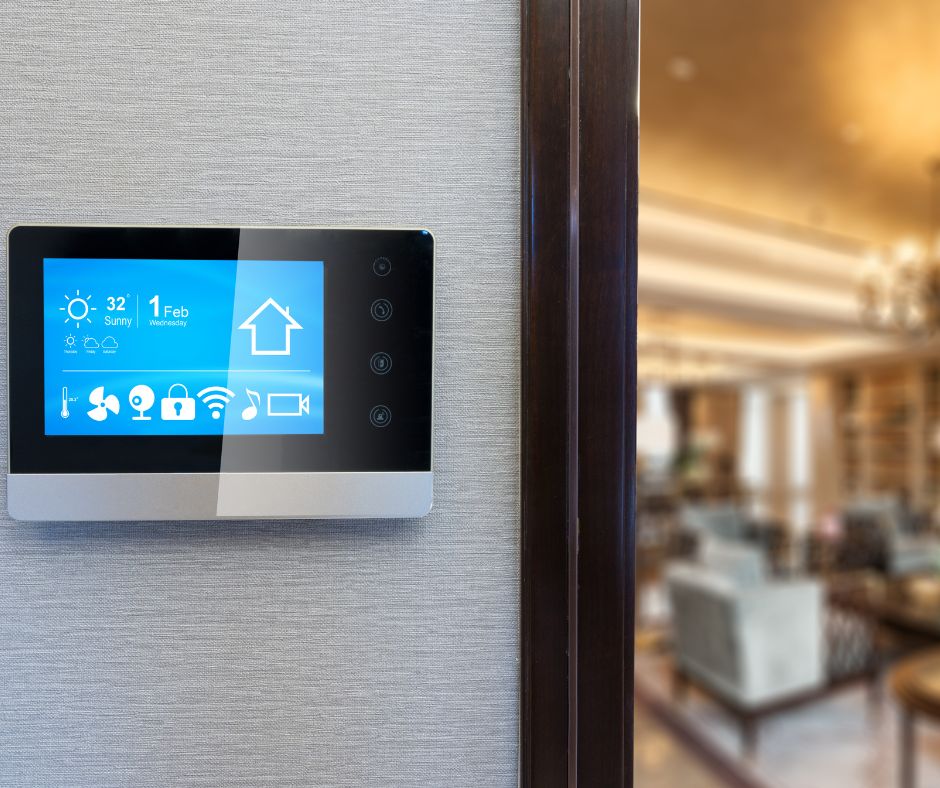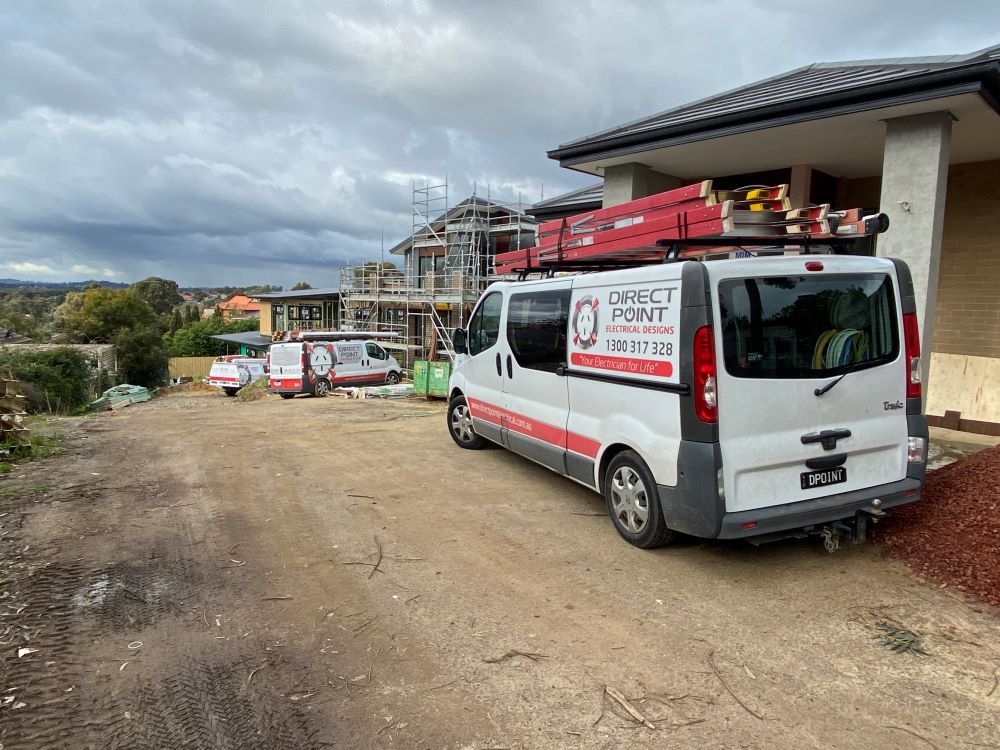Essential Components for Building a High-Performance Smart Home Electrical Network
A well-designed smart home electrical network effortlessly connects various systems such as lighting, climate control, security measures, and automation technologies. This integration transforms daily living into a more convenient and efficient experience. Achieving this level of sophistication necessitates the use of safe, compliant wiring, modern smart switches or relays, and compatible hubs, including Google Home and Amazon Alexa. Additionally, it typically incorporates sensors, voice control functionalities, and application-based scheduling to enhance user interaction. Consulting with a qualified electrician is vital to guarantee the correct installation of all devices and to design circuits that are future-ready for evolving technologies.

Unveiling the Benefits and Capabilities of a Smart Home
Smart homes go beyond mere gadgets; they represent a remarkable leap forward in home management, security, and lifestyle enhancement. More homeowners are embracing smart lighting, advanced climate control systems, and comprehensive security solutions. However, many remain unaware that a robust electrical infrastructure is fundamental for any smart system to operate reliably and safely. This is where Direct Point Electrical stands out; we not only excel in wiring homes but also focus on future-proofing them to accommodate future advancements in technology, thereby enhancing comfort and security.
Defining the Essentials of a Smart Home Electrical System
A smart home electrical system interlinks multiple appliances, lighting, heating, and security setups through a unified control interface, which could be an app, voice assistant, or touch panel. The prime objective is to achieve effortless automation. For instance, lights that respond to motion, air conditioning that adjusts based on occupancy, and doors that can be unlocked remotely via a smartphone are all examples of this integration. However, achieving such sophistication necessitates careful attention to:
- Well-designed circuits and load distribution for efficient operation
- Certified smart-compatible devices and controllers to enhance functionality
- Safe wiring that adheres to AS/NZS 3000:2018 standards
- Reliable internet connectivity and backup power solutions to ensure uninterrupted service
Core Systems Required for an Efficient Smart Home
1. Revolutionising Home Lighting with Advanced Smart Solutions
Smart lighting serves as the cornerstone for a comprehensive home automation strategy. Homeowners can set scheduled routines, such as a “Goodnight” sequence that turns off all lights, and control brightness levels in specific areas while automating pathways with motion sensors. The available options include:
- Wi-Fi or Zigbee-enabled downlights that offer optimal connectivity
- Smart switches or in-wall dimmers for accurate control over lighting
- Outdoor lights equipped with daylight sensors to promote energy efficiency
- Room presets activated by voice commands for added user convenience
We follow industry best practices by ensuring that all circuits are protected by RCDs and utilise only fire-rated fittings where appropriate, such as in ceiling voids. Consider exploring our Energy-Efficient Installations for compatible lighting upgrades that significantly improve your home’s energy efficiency.
2. Optimising Temperature Control with Smart Climate Management Solutions
Experience the convenience of managing your home’s temperature straight from your smartphone or having it automatically adjust based on your presence. Our smart climate management solutions encompass:
- Smart thermostats for precise temperature regulation
- Split system AC automation modules to enhance energy efficiency
- Heated towel rail timers engineered to optimise energy usage
- Exhaust fan timers for bathrooms and laundries to improve air quality
We guarantee that all high-load devices are isolated on dedicated circuits and equipped with suitable amperage and overcurrent protection to ensure safe and efficient operation throughout your residence.
3. Enhancing Home Security with Cutting-Edge Smart Systems
Smart security systems are vital for safeguarding your home while ensuring connectivity with your surroundings. These systems may consist of:
- Doorbell cameras with two-way audio for effective communication
- Motion-activated lighting that illuminates when movement is detected
- Integration with garage roller doors for added convenience
- Electric door strikes that allow keypad or smartphone access
- CCTV systems with remote access capabilities for peace of mind
It is essential to ensure that outdoor and wet-zone installations meet the IP rating standards outlined in AS/NZS 60529, and we strictly adhere to these regulations during all installations. Explore our Security Wiring Services for comprehensive information.
4. Smart Switchboards: The Central Node of Home Automation
Modern smart switchboards offer app-level control over individual circuits, making them ideal for:
- Monitoring power consumption for improved efficiency
- Balancing loads across circuits for optimal performance
- Providing surge protection to ensure safety
- Enabling remote shutdown capabilities, such as during a holiday
If you’re considering constructing a new building or upgrading your current switchboard, do not hesitate to check our Switchboard Upgrade Services for extensive assistance tailored to your requirements.
Comparing Wireless and Wired Systems: Finding the Right Fit for Your Home
Wireless Options (Wi-Fi/Zigbee/Bluetooth):
Pros: Wireless systems are simple to retrofit into existing homes and offer a rapid installation process that minimises disruption.
Cons: They rely on a stable network connection and may face failures if the router encounters issues.
Wired Options (KNX, Cat6, DALI):
Pros: Wired systems provide ultra-reliable performance, enhanced security, and scalability for future expansions and upgrades.
Cons: They typically involve higher costs and are generally more suitable for new construction projects.
In residences throughout Melbourne’s eastern suburbs, we often employ a hybrid approach: using wiring where feasible (for components like switches, alarms, and cameras) while applying wireless technology for lighting or climate control zones, creating a balanced and effective system.
Comprehending Essential Protocols in Smart Home Technology
- Zigbee: A low-energy mesh network ideal for efficient lighting control
- Z-Wave: A secure and highly scalable option, albeit more niche
- Wi-Fi: Easy to implement but can overwhelm home networks if not properly managed
- Matter (previously known as Project CHIP): An emerging open-source standard backed by major players such as Apple, Google, and Amazon, expected to set industry benchmarks
- KNX/DALI: High-end, wired commercial-grade systems typically used in large-scale installations
We ensure that your smart system remains compatible with both current and upcoming protocols, preventing device obsolescence and maximising your investment in smart technology.
Our Comprehensive Approach to Smart Setup Design
Every smart home installation starts with a detailed and tailored plan. Our thorough process includes:
- Conducting an extensive audit of your existing wiring and device layout for optimal integration
- Mapping out zones based on usage patterns and electrical load requirements
- Separating high-voltage (power) from low-voltage (data) systems for enhanced safety
- Ensuring all safety devices, such as RCDs and RCBOs, are installed correctly for maximum protection
- Coordinating with builders or automation technicians as necessary to ensure seamless integration
Our certified electricians oversee all installations to ensure complete compliance with AS/NZS 3000 standards and provide a Certificate of Electrical Safety (COES) for each smart-enabled upgrade. We frequently collaborate on new home builds, introducing the latest automation innovations to homeowners. Additionally, we can integrate smart technology into existing residences; simply reach out to us with any inquiries regarding installation or upgrades.
Your Questions Answered: Smart Home FAQs
Is it necessary to hire a licensed electrician for smart system installations?
Absolutely. All wiring and new switch installations must be performed by a licensed professional in Victoria to ensure safety, compliance, and reliability.
Can I use both Alexa and Google in the same household?
Yes, you can use both platforms; however, they will function independently, requiring compatible devices for each.
Will smart lights operate during a power outage?
No, standard smart lights will not function during a power outage, although battery-backed systems (such as those for cameras or sensors) can maintain some level of functionality during outages.
Is it possible to start automating just one room initially?
Definitely. Many clients begin with automation in a living room or kitchen and gradually expand their system over time as needs change.
Will using smart devices increase my electricity usage?
No, most smart devices consume less than 1W in standby mode. In fact, automation often leads to a decrease in overall energy consumption by optimising how and when devices are used.

Transforming Your Living Experience with Smart Home Technology
A smart home is not just about technology for its own sake; it fundamentally aims to create a safer, more efficient, and personalised living environment. Whether your goal is to implement straightforward smart lighting solutions or to establish a fully automated home experience, Direct Point Electrical is committed to crafting a system tailored to your unique lifestyle. We empower homeowners to invest in wiring that not only meets today’s demands but also accommodates the advancements anticipated in the coming decade.
The Article: Smart Home Electrical Setup for Future-Ready Wiring first appeared on https://writebuff.com
The Article Smart Home Electrical Setup: Wiring for the Future Was Found On https://limitsofstrategy.com


Your overview of building a high-performance smart home electrical network resonates with my experience integrating smart technologies in my own home. I’ve noticed that a well-planned network not only enhances convenience but also plays a role in sustainability. For instance, with smart thermostats and lighting, I’ve managed to reduce my energy consumption significantly—something I hadn’t expected when I first started out!
Your insights into the essential components of a high-performance smart home electrical network resonate deeply, particularly as our daily lives become increasingly interwoven with technology. The emphasis on safe, compliant wiring and the role of a qualified electrician cannot be overstated. Too often, we prioritize the allure of convenience and the appeal of the latest gadgets without fully considering the foundational elements that ensure these systems work harmoniously and safely.